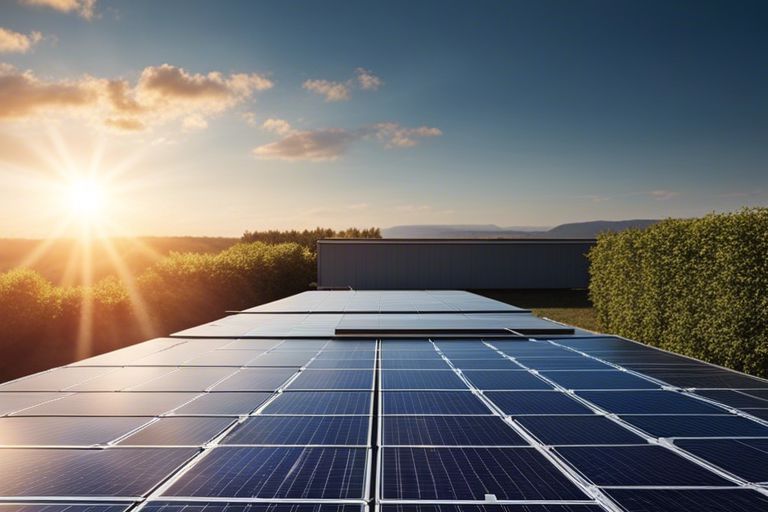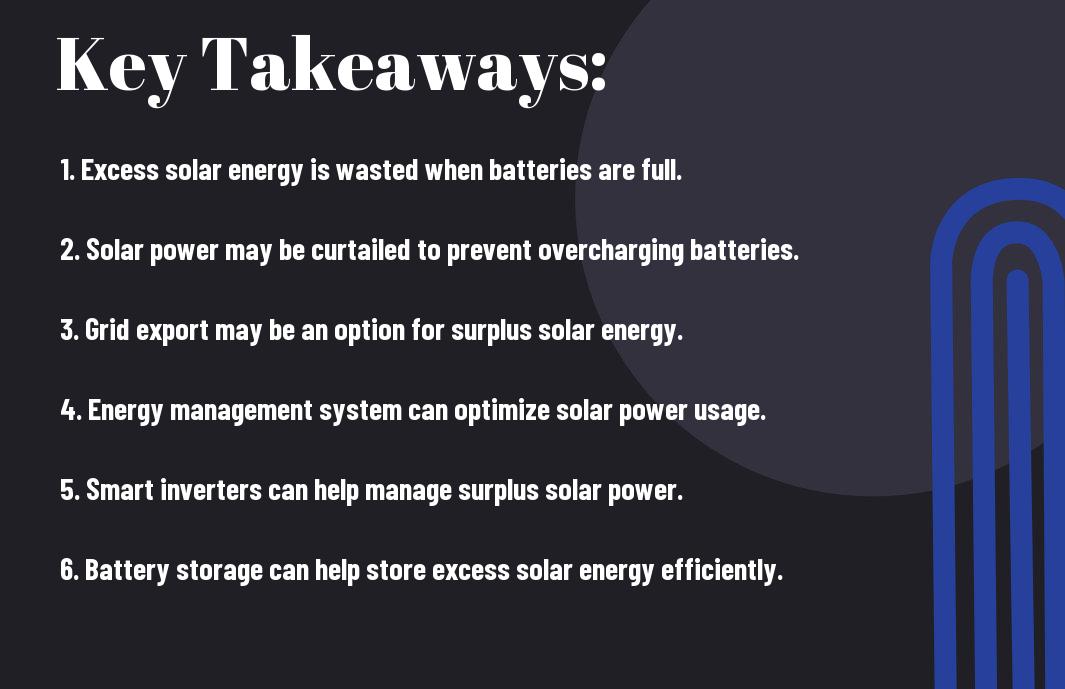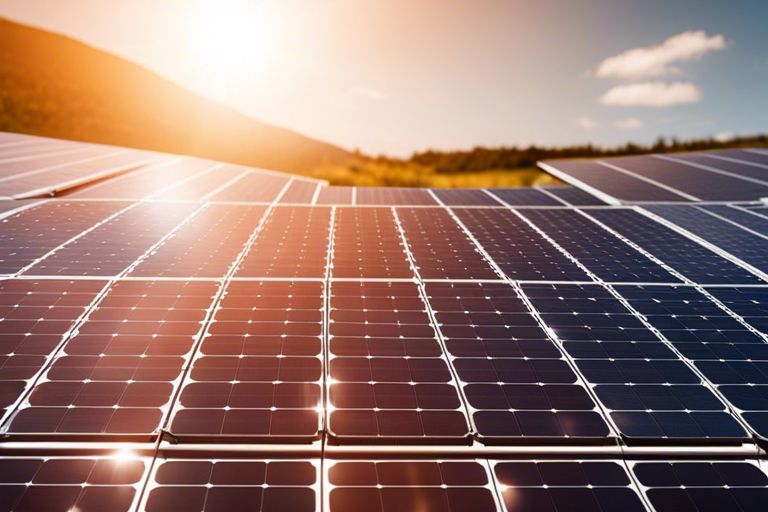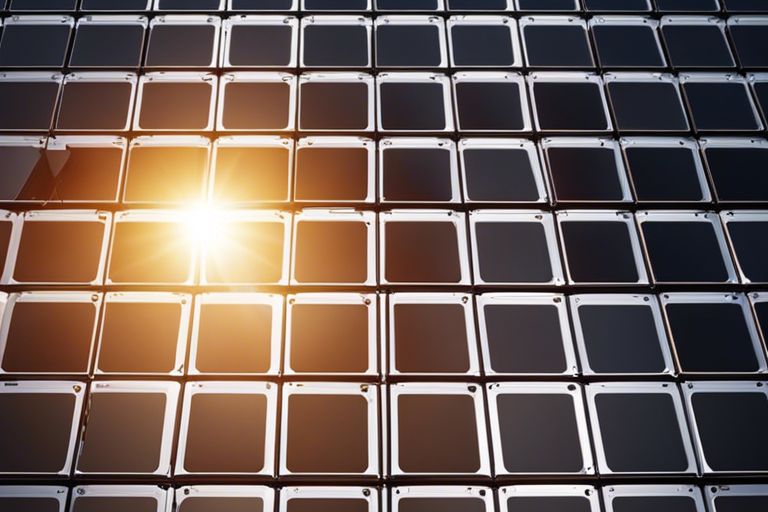Power generation from your solar panels doesn’t just stop when your batteries are full. Instead, the excess energy your solar panels produce gets redirected back into the grid, ensuring that nothing goes to waste. This surplus energy can be used by your neighbors or stored for future use, creating a sustainable and efficient system. Understanding how solar power behaves when batteries are full can help you make the most of your renewable energy setup.
Key Takeaways:
- Excess energy can be wasted: When batteries are full, any excess solar power generated cannot be stored and may go to waste.
- Grid-tied systems can sell excess energy: In a grid-tied system, surplus solar power can be fed back into the grid for credits or monetary compensation.
- Optimizing energy usage is crucial: Properly managing energy consumption and production can help maximize the benefits of solar power even when batteries are full.
The Basics of Solar Power
How Solar Panels Generate Electricity
To understand how solar panels generate electricity, you need to know that they are made up of photovoltaic cells that convert sunlight into direct current (DC) electricity. When sunlight hits the solar panels, the photovoltaic cells create an electric field, allowing electrons to flow and generate electricity. This electricity is then converted into alternating current (AC) power using an inverter, making it usable for your home appliances. So, necessaryly, solar power is a clean and renewable energy source that can help reduce your reliance on traditional fossil fuels.
The Role of Batteries in Solar Power Systems
Any excess electricity generated by your solar panels when your batteries are full is stored for later use. Batteries play a crucial role in solar power systems as they store this excess electricity to ensure you have power when the sun is not shining. They allow you to have a reliable source of electricity even during nighttime or when there is limited sunlight. This stored energy can also be useful during power outages or emergencies, providing you with a backup power supply.
Powering your home with solar energy not only helps reduce your carbon footprint but also gives you more control over your energy usage. By incorporating batteries into your solar power system, you can store excess energy for when you need it most, ensuring a continuous and reliable power supply for your home.
What Happens When Batteries Are Full
Little do you know, when your solar power system generates more electricity than your batteries can store, it leads to excess energy production. This surplus energy needs to be managed effectively to ensure optimal system performance and prevent any wastage.
Excess Energy Production
Production of excess energy occurs when your batteries are fully charged, and your solar panels continue to generate electricity. In such cases, the excess energy can be redirected to power other appliances or fed back into the grid, depending on the type of system you have in place.
Grid Tie Systems vs. Off-Grid Systems
When considering what happens to solar power when batteries are full, it’s imperative to understand the differences between grid-tie systems and off-grid systems. Grid-tie systems are connected to the utility grid, allowing you to sell excess energy back to the grid or draw power from it when needed. On the other hand, off-grid systems operate independently of the grid, relying solely on batteries to store excess energy for later use.
Energy management becomes crucial in grid-tie systems, as you can benefit financially by selling excess energy back to the grid. In contrast, off-grid systems require efficient battery storage to ensure a continuous power supply when solar production is low or when demands exceed what the panels can generate.
Energy Storage and Release
Charging and Discharging Cycles
For solar power systems with batteries, the energy storage process involves charging and discharging cycles. When your batteries are full, the excess energy generated by your solar panels is stored in the batteries for later use. During periods of low sunlight or high energy demand, the stored energy is released from the batteries to power your home. This cycle of charging and discharging allows you to maintain a steady and reliable power supply even when sunlight is not available.
Battery Management Systems
Energy storage systems rely on Battery Management Systems (BMS) to monitor and control the charging and discharging of the batteries. The BMS helps optimize the performance and lifespan of the batteries by ensuring they are charged and discharged properly. It also protects the batteries from overheating, overcharging, and over-discharging, which can damage the battery cells and reduce their efficiency over time.
Management of the battery system is crucial to ensuring the long-term reliability and efficiency of your solar power setup. By implementing a robust BMS, you can maximize the performance of your batteries and extend their lifespan, ultimately saving you money on replacements and maintenance costs.
Alternative Paths for Excess Energy
Feeding Energy Back into the Grid
Keep in mind that when your batteries are full, you still have the option to feed excess energy back into the grid. This process, known as net metering, allows you to receive credits for the surplus energy you contribute. By sharing your solar power with the grid, you not only support the transition to renewable energy but also benefit economically.
Using Excess Energy for Other Purposes
On occasions when your batteries are fully charged and you are not feeding energy back into the grid, you can explore alternative ways to utilize the excess energy generated by your solar panels. An innovative approach is to divert this surplus power to operate energy-intensive appliances or devices in your home, such as electric water heaters, electric vehicles, or even heating systems. By doing so, you maximize the use of your solar power and reduce your reliance on grid-supplied electricity.
An additional benefit of using excess energy for other purposes is the potential for increased energy independence. By optimizing the consumption of the energy your solar panels produce, you can further reduce your dependence on traditional energy sources and embrace a more sustainable lifestyle. Paths
System Design and Configuration
Despite advancements in solar technology, it is crucial to carefully design and configure your solar power system to ensure optimal performance. This involves considerations such as sizing your solar arrays and batteries, as well as understanding the functions of inverters and charge controllers.
Sizing Solar Arrays and Batteries
On your journey to sustainable energy, sizing your solar arrays and batteries correctly is crucial. A larger solar array will allow you to generate more power, which can then be stored in your batteries for later use. Properly sizing your batteries ensures that you have enough storage capacity to store excess energy produced during sunny days for use during cloudy or nighttime periods.
Inverter and Charge Controller Functions
Batteries play a critical role in your solar power system by storing excess energy generated by your solar panels. The inverter and charge controller work hand in hand to manage the flow of electricity between your solar panels, batteries, and household appliances. The inverter converts the direct current (DC) electricity produced by the solar panels into alternating current (AC) electricity that your home appliances can use. The charge controller regulates the charging and discharging of the batteries to ensure they remain healthy and maximize their lifespan.
Functions
Understanding the functions of inverters and charge controllers is crucial for optimizing the performance of your solar power system. The inverter ensures that the electricity generated by your solar panels is converted efficiently for use in your home, while the charge controller protects your batteries from overcharging or discharging, extending their longevity. By carefully selecting and configuring these components, you can ensure that your solar power system operates smoothly and effectively, even when your batteries are full.
Energy Efficiency and Optimization
Minimizing Energy Losses
Optimization is key when it comes to maximizing the efficiency of your solar power system. One way to ensure you are getting the most out of your system is to minimize energy losses. Energy losses can occur during the conversion of DC power from the solar panels to AC power that you can use in your home. By investing in high-quality inverters and keeping them well-maintained, you can reduce these losses and make sure more of the power generated by your solar panels is actually being used.
Optimizing System Performance
Efficiency is crucial in ensuring your solar power system is performing at its best. By optimizing your system’s performance, you can make sure that you are getting the most energy possible out of your panels. This includes regularly monitoring your system’s output, cleaning your panels to remove dirt and debris that can reduce efficiency, and adjusting the tilt and orientation of your panels to maximize sunlight exposure.
With a focus on efficiency and optimization, you can make the most of your solar power system even when your batteries are full. By minimizing energy losses and optimizing your system’s performance, you can ensure that you are using all the solar energy you generate effectively, reducing your reliance on the grid and saving money on your energy bills.
To wrap up
Presently, you should now have a better understanding of what happens to solar power when batteries are full. It’s crucial to have a grasp of how excess solar power is managed and stored efficiently, especially as more households and businesses are looking to harness solar energy. By exploring this topic, you are gaining knowledge that can help you make informed decisions about sustainable energy practices.
FAQ
Q: What happens to solar power when batteries are full?
A: When the batteries connected to a solar power system are full, the excess electricity generated by the solar panels is typically sent back to the grid if the system is grid-tied. In off-grid systems, the excess electricity may be wasted if there is no way to store or utilize it.
Q: How does the solar power system know when the batteries are full?
A: Solar power systems utilize charge controllers, which monitor the state of charge of the batteries. Once the batteries reach their full capacity, the charge controller stops the flow of electricity from the solar panels to the batteries, preventing overcharging.
Q: Can excess solar power be stored in other ways when batteries are full?
A: Yes, excess solar power can be stored in other ways when batteries are full. One common method is to divert the excess electricity to power water heaters or other appliances that can utilize the additional energy. Another option is to use a grid-tied system with net metering, where excess electricity can be sent back to the grid for credit.



